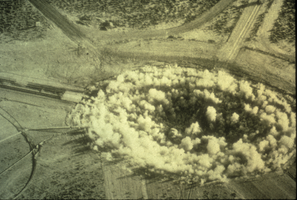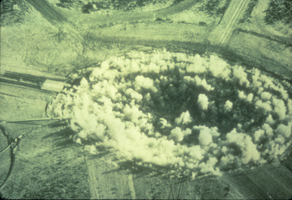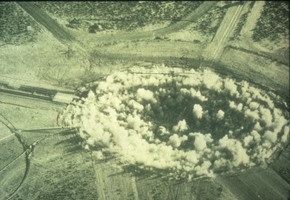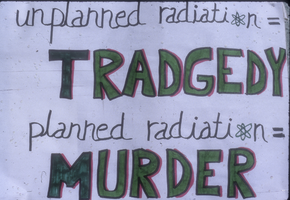Search the Special Collections and Archives Portal
Search Results

Vaporized ground from underground test at the Nevada Test Site: photographic slide
Date
Archival Collection
Description
From the Sister Klaryta Antoszewska Photograph Collection (PH-00352)
Image

Vaporized ground from underground test at the Nevada Test Site: photographic slide
Date
Archival Collection
Description
From the Sister Klaryta Antoszewska Photograph Collection (PH-00352)
Image

Vaporized ground from underground test at the Nevada Test Site: photographic slide
Date
Archival Collection
Description
From the Sister Klaryta Antoszewska Photograph Collection (PH-00352)
Image

Photo captioned "Army recruits on basic training march in Kentucky": photographic slide
Date
Archival Collection
Description
From the Sister Klaryta Antoszewska Photograph Collection (PH-00352)
Image

Nevada Test Site protest sign: photographic slide
Date
Archival Collection
Description
From the Sister Klaryta Antoszewska Photograph Collection (PH-00352). Written on sign: "nuclear accidents: we PLAN them in NEVADA".
Image

Nevada Test Site protest sign: photographic slide
Date
Archival Collection
Description
From the Sister Klaryta Antoszewska Photograph Collection (PH-00352). Written on sign: "Hell no we won't GLOW".
Image

Nevada Test Site protest sign: photographic slide
Date
Archival Collection
Description
From the Sister Klaryta Antoszewska Photograph Collection (PH-00352). Written on sign: "unplanned radiation = TRADGEDY; planned radiation = MURDER".
Image

Nevada Test Site protest sign: photographic slide
Date
Archival Collection
Description
From the Sister Klaryta Antoszewska Photograph Collection (PH-00352). Written on sign: "Nix on numax".
Image

Nevada Test Site protest sign: photographic slide
Date
Archival Collection
Description
From the Sister Klaryta Antoszewska Photograph Collection (PH-00352). Written on sign: "An allowable level of radiation is an allowable level of cancer who decides?".
Image

Nevada Test Site protest sign: photographic slide
Date
Archival Collection
Description
From the Sister Klaryta Antoszewska Photograph Collection (PH-00352). Written on sign: "Feed the people not the pentagon".
Image
